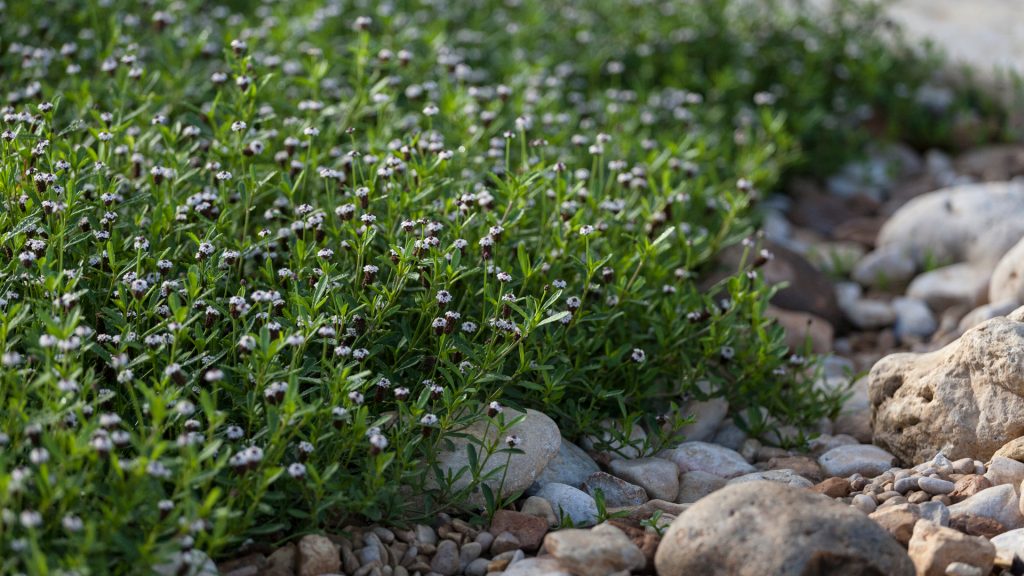Before you replace your lawn with a trendy alternative, consult our go-to guide for substitutes that are made for central Texas’ unique weather and soil conditions.
With each year, lawn alternatives become more and more popular. The rise of “anti-lawnfluencers” on various social media platforms are encouraging new generations of homeowners and even renters to revamp their landscape with something that has greater benefits for wildlife and the ecosystem.
But it’s important to remember that there are a lot of nuances to navigate around — including soil types, native plants, sunlight needs, and more — that simply can’t be detailed on those platforms.
Luckily, we’ve got a go-to guide for central Texas friendly lawn alternatives.
Instead of moss, try silver ponyfoot.
Moss lawns are so alluring with their gorgeous, soft, plushy look and feel, but keeping a moss lawn in central Texas would take more water than traditional grass. That is, if it didn’t immediately singe away from the unbearable summer heat. Moss is more successful in climates with consistent year-round rain as opposed to our monsoon-like spring and fall deluges.
For a similar soft look of moss, the flowing silvery rotund leaves of silver ponyfoot. This native Texan grows a whopping three inches tall, so mowing isn’t necessary. Since it can’t handle heavy foot traffic, it’s a great option as a front lawn replacement. Better yet, it’s absolutely magical spilling over the edge of a wall or curb!
Instead of clover or phlox try a mix of frogfruit, oxalis, and horseherb.
Clover lawns and phlox lawns are perhaps the second most popular option shared. Their soft velvety leaves and short maximum heights make for a low maintenance, lawn-like appearance. They also offer lots of tiny flowers that benefit pollinators in the places that they’re native to. Unfortunately, our scant rainfall and harsh sun rays scorch most varieties recommended.

For San Antonio, frogfruit, yellow oxalis, and horseherb are lovely alternatives. From shade to sun these three have you covered. You’ll see the oxalis and horseherb ebb back some in the middle of summer and winter, but frogfruit will hold down the fort until the other two return in spring and fall.
No matter what you choose, keep in mind that replacing turf isn’t all sunshine and rainbows. There will be a journey to transition and occasional mowing may be required, but in the long run it can help you save a significant amount of water every month.
If you are ready to embrace a non-traditional lawn, these recommended swaps will make implementation and maintenance much easier.


